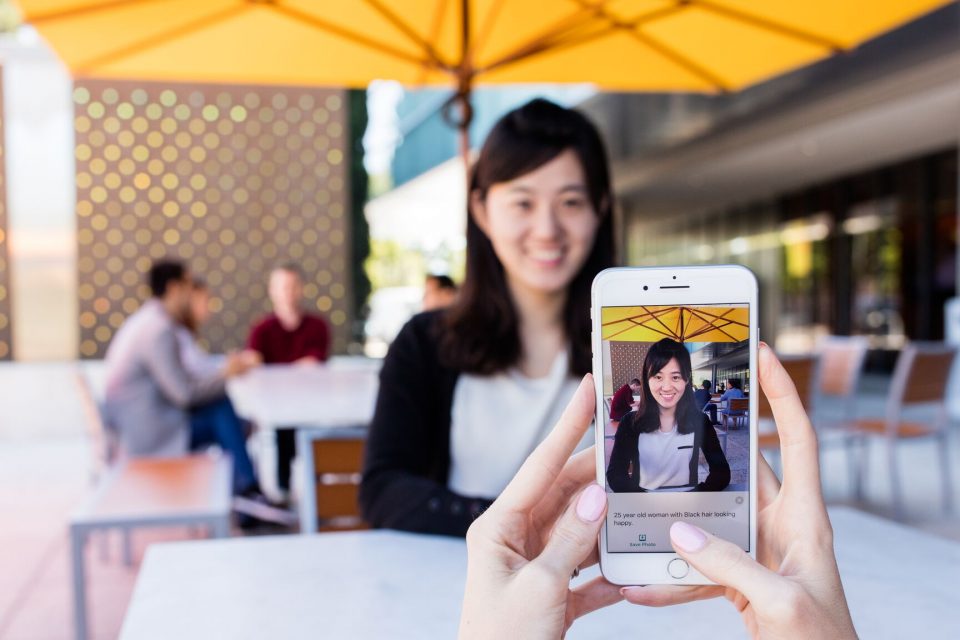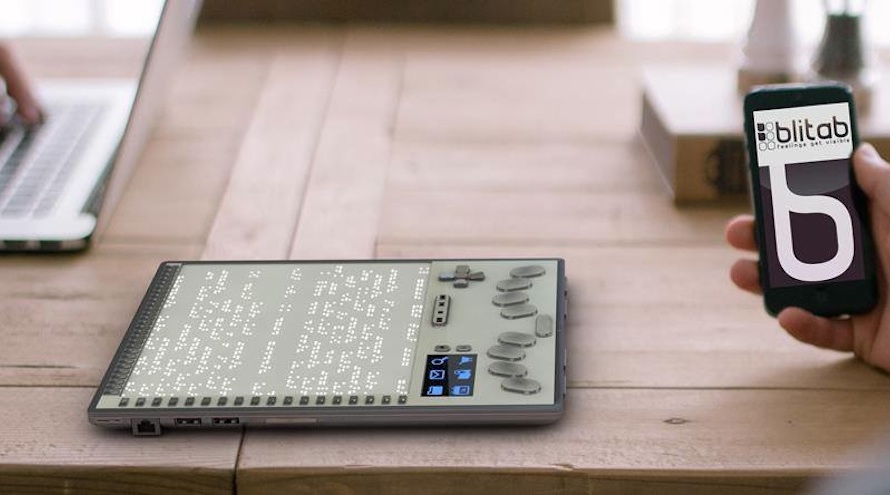OCR Devices for the Blind: Changing Print to Speech in Real-Time
Empowering Self-reliance With Assistive Technology for the Blind
The integration of assistive innovation right into the lives of individuals with aesthetic impairments represents a considerable advancement in promoting independence and self-sufficiency. From ingenious screen visitors to sophisticated smart walking canes, these tools not only boost everyday navigating and communication yet likewise encourage users to involve meaningfully in numerous elements of life. As we explore the myriad advantages and real-world applications of these innovations, it comes to be critical to take a look at the hidden variables that contribute to their efficiency and the possibility for future growths in this important field.
Overview of Assistive Innovation

The growth of assistive modern technology is grounded in concepts of inclusivity and empowerment. Developments in software, hardware, and sensory improvements give individuals with options tailored to their details requirements. From display viewers that convert message to speech, to tactile tools that convey details via touch, these devices transform the method individuals involve with their surroundings.
In addition to sensible applications, assistive technology promotes better social incorporation and involvement in different fields, including education and learning and employment (Braille displays and notetakers). As study and development remain to advance, the possibility for assistive innovation to further boost the lives of aesthetically impaired individuals remains encouraging, leading the way for a more fair society where everybody can thrive
Types of Assistive Instruments
A variety of assistive gadgets have actually emerged to sustain individuals with aesthetic impairments, each created to fulfill particular needs and boost daily performance. These gadgets range from low-tech solutions to sophisticated advancements, providing varied alternatives for customers.
Low-tech devices include magnifiers and large-print products that aid in reading and writing. Braille devices, such as Braille stylus pens and slates, make it possible for responsive reading and communication. Orientation and wheelchair help, like white walking sticks, assist customers browse their setting securely.
On the higher end of the range, digital zoom systems and display visitors supply considerable assistance. Digital magnifiers allow users to expand message and images on displays, while display readers transform electronic material into synthesized speech, facilitating accessibility to information on mobile phones and computer systems.
Mobile phone applications additionally play an essential duty, supplying functions like message acknowledgment and navigating aid. Wearable innovation, such as wise glasses outfitted with increased truth, is becoming an encouraging device to enhance situational awareness.
Advantages of Assistive Technology
The integration of assistive technology considerably enhances the lifestyle for people with visual disabilities. These technologies encourage customers by advertising freedom, enabling them to browse their environments better and perform everyday jobs with greater convenience. For example, display visitors and magnification software permit individuals to accessibility electronic details, promoting instructional and specialist opportunities that might have previously been out of reach.
Moreover, assistive devices such as wise walking sticks and general practitioners applications offer real-time navigation support, enhancing wheelchair check this and security. This raised freedom not only improves self-esteem however likewise urges social interaction, allowing individuals to get involved even more fully in their neighborhoods.
Assistive technology additionally facilitates interaction, assisting users get in touch with others via Check This Out voice acknowledgment and text-to-speech applications. This capacity is vital for maintaining partnerships and accessing critical information.
Additionally, the personalization choices readily available with several assistive technologies ensure that individuals can tailor gadgets to their specific demands, even more improving usability and efficiency. Generally, the advantages of assistive innovation for people with aesthetic impairments are extensive, promoting an extra inclusive society where everyone can pursue their goals and aspirations.
Case Research Studies and Success Stories
Highlighting the transformative impact of assistive innovation, countless study highlight exactly how individuals with visual impairments have actually successfully incorporated these tools into their every day lives. One compelling example entails an university student who used display analysis software program to browse on-line resources and academic materials efficiently. This modern technology not just promoted her education however also boosted her self-confidence in taking part in discussions and group jobs.
Another study includes a specialist that utilizes a smart device application made for navigation and item recognition. By utilizing this app, he has actually restored freedom in both his personal and work environments, allowing him to commute separately and involve with colleagues better.
In addition, a retiree shared her experience with braille e-readers, which enabled her to access a substantial array of literature and remain linked with her community through book clubs.
These success tales highlight the crucial role of assistive technology in fostering self-reliance, boosting quality of life, and promoting social assimilation for individuals with visual impairments (Screen readers for the blind). By welcoming these innovative devices, users can get rid of difficulties and take opportunities that add to their individual and specialist gratification

Future Trends in Assistive Technology
Advancement in assistive modern technology is poised to redefine the landscape of support for individuals with visual problems. Emerging trends stress the assimilation of synthetic intelligence (AI) and device understanding, which enhance the performance of devices that aid with navigating and details ease of access. As an example, AI-driven applications are now capable of translating aesthetic data in real-time, allowing individuals to engage with their environment much more independently.
Moreover, the advancement of wearable innovation is progressing quickly. Smart glasses outfitted with augmented fact (AR) can supply audio descriptions of this content environments, transforming just how customers interact with public spaces. These devices not just promote freedom yet also foster social inclusion.
In Addition, the Web of Points (IoT) is making homes smarter, enabling seamless connection in between daily appliances and assistive gadgets. This connectivity empowers users by allowing voice-activated controls and automated feedbacks customized to specific needs.
Final Thought
In verdict, assistive modern technology plays a critical role in empowering individuals with visual impairments by enhancing their self-reliance and involvement with their surroundings. The varied series of applications and devices available not only helps with navigating and communication yet also advertises social integration and chances for individual and specialist development. As innovations continue in this area, the potential for boosting the lifestyle for those with visual problems will expand, fostering better autonomy and empowerment.
